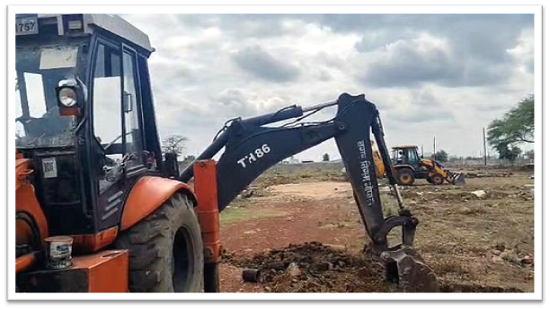
Century Mill Land in Worli Cleared for 588 Workers’ Homes: A Constructive Step in Mumbai’s Housing Journey
In Mumbai’s ever-evolving housing landscape, decisive governance often makes the difference between aspiration and reality. The recent clearance of 1.5 acres of land at Century Mill in Worli, set aside for mill workers’ housing, illustrates this point vividly. Under the administrative oversight of IAS Sanjeev Jaiswal, what was once a protracted management conflict has now transformed into a forward-looking housing initiative. The approval for 588 new units is not just an isolated infrastructure decision—it is a reflection of how structured leadership, legal clarity, and citizen advocacy can converge to resolve long-standing urban bottlenecks.
For decades, mill workers have stood as the backbone of Mumbai’s industrial growth. Yet, many of them and their families continue to face housing insecurity despite contributing immensely to the city’s prosperity. This clearance marks a turning point, reaffirming the principle that land once tied to the working class should continue to serve their welfare. It also demonstrates a larger lesson in governance: when land is scarce, transparent allocation and focused execution matter more than ever. By ensuring that this Worli plot will deliver tangible homes rather than remain caught in disputes or speculative transactions, authorities have reinforced faith in the system.
More importantly, this development must be seen in the broader context of Mumbai’s urban housing challenge. With over 250,000 applications from mill workers and descendants pending across the city, every acre released for worker housing is a valuable milestone. The Century Mill project underscores not only the government’s commitment to worker welfare but also its ability to balance heritage preservation with the pressing needs of modern urban planning.
Unlocking Land for Public Good
For years, portions of prime mill land in Mumbai remained locked due to management disputes, creating uncertainty for thousands of workers who had spent their lives contributing to the textile industry. The recent clearance of the Worli site demonstrates how focused administrative action can transform stalemates into tangible progress. By prioritizing housing over speculative sale, authorities havse reinforced the principle that land once dedicated to workers should continue to serve their families.
Context of Mill Worker Housing in Mumbai
Mumbai’s mill lands are more than parcels of real estate—they are intertwined with the city’s industrial heritage. Over 250,000 mill workers and their descendants have applied for housing, yet availability has remained limited. The state has historically faced a mismatch between demand and supply, which underscores the importance of every project that delivers new units.
The following table highlights the evolution of housing allocation at Century Mill:
|
Year |
Total Land (Sq. Meters) |
Land Allocated for Housing |
Houses Constructed |
Houses Now Cleared for Construction |
|
2012 |
17,980.69 |
13,091.90 |
2,130 |
– |
|
2025 |
– |
Additional 1.5 acres |
– |
588 |
This trajectory signals that while progress has been incremental, recent actions are unlocking fresh potential.
Balancing Aspirations with Practical Realities
The Girni Kamgar Union (GKSS) has been advocating for this land for over a decade, and their persistence highlights the enduring demand for affordable housing in central Mumbai. With over 8,600 eligible workers at Century Mill alone, it is mathematically impossible to accommodate all applicants in Worli. Recognizing this, policymakers have rightly shifted focus to a dual strategy:
• Utilize central Mumbai land to honor the legacy of workers.
• Expand housing opportunities in Thane, Kalyan, and surrounding areas, where larger parcels allow for more inclusive planning.
This blend of heritage sensitivity and pragmatic expansion creates a sustainable housing roadmap.
Lessons for Urban Governance
What stands out in this development is the clarity of governance. The Supreme Court’s earlier directive ensured that land designated for workers remains shielded from speculative misuse. By aligning legal mandates with administrative execution, the state has ensured that redevelopment is both lawful and socially just.
Moreover, the emphasis on verification through official MHADA channels sends an important message: in a city where land is both scarce and contested, transparency is non-negotiable. Citizens and stakeholders alike must anchor their expectations in authentic documentation rather than informal promises.
A Constructive Outlook
The clearance of the Worli plot is not just a win for 588 families—it is a signal that Mumbai’s housing story can be one of fairness, foresight, and inclusivity. Each new foundation laid on former mill land is also a foundation for trust in public institutions.
As Maharashtra continues to balance industrial heritage with modern urban needs, the Century Mill decision sets an example of how leadership, persistence, and policy alignment can transform contested ground into homes filled with security and dignity.
